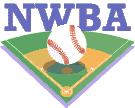|
|
|
Note: You must be registered in order to post a reply.
To register, click here. Registration is FREE!
|
| T O P I C R E V I E W |
| Rapid |
Posted - 05/21/2018 : 07:36:31
Most people are familiar with the term core, and know that it can play a critical role in the development and performance of an athlete. When you think core it’s easy to think of the abdominal area and the “six pack.” However, this is a common misconception! While the abdominal muscles are certainly included as a part of the core, it should actually be considered as one “midsection” unit. It may be helpful, in a conceptual manner, to picture the core as everything that isn’t your head, arms, or legs.
Rapid Sports Performance believes firmly in establishing a strong core, and we have A TON of exercises and methods we use to do so. The two structures that we place a lot of emphasis on are the rib cage, and the pelvis. The position of these two areas of dictate both posture and movement patterns.
Here are two simple examples: if the rib cage is too extended (poor postural control), it will influence the way the humerus (arm bone) and the scapula (shoulder blade) move because these two bones are connected to the rib cage.
If the pelvis is too extended (poor postural control), the femur (leg bone) will not be able to move properly, and compensatory movement actions are forced to take place. The brain will find a way to complete movement, often via extension of the lower back, and this is a common cause of generalized lower back discomfort. Simply put, when the leg bone runs out of room, the low back takes over to finish the movement.
So in consideration of these examples, CONTROL of POSITION is the name of the game when it comes to core training! We use challenging drills, both loaded and unloaded, that require the athlete to control the pelvis and rib cage. Muscles in the front of the body (abs for example) control rib cage position, and muscles in the back of the body (gluteal and hamstrings) are important for controlling pelvic position. It is in this regard that the core helps to keep the athlete healthy!
In addition to controlling position, the core plays another significant part as it transfers force from the lower body to the upper body. The force that’s generated for a home run starts in the lower half and is transferred through the core to the upper body and ultimately into the bat striking the ball. As another example, a stiff and strong core allows for an athlete to “stay together” during the transfer of force from the lower half to the upper half during a pitch. Athletes who do not have the strength to stay firm in the core and control rotation often find themselves losing velocity, losing their timing in mechanics, and placing stress on the wrong structures.
We hope this is helpful!! Stay tuned for next week when we introduce a few of our big bang core training drills! Please feel free to request future topics!!
All the best,
The Rapid Team
www.go-rapid.com
-Andrew Gordon, MS, CSCS
404-644-1855
Andrew.Gordon@go-rapid.com
|
|
|
| Georgia Travel Baseball - NWBA |
© 2000-22 NWBA |
 |
|
|




